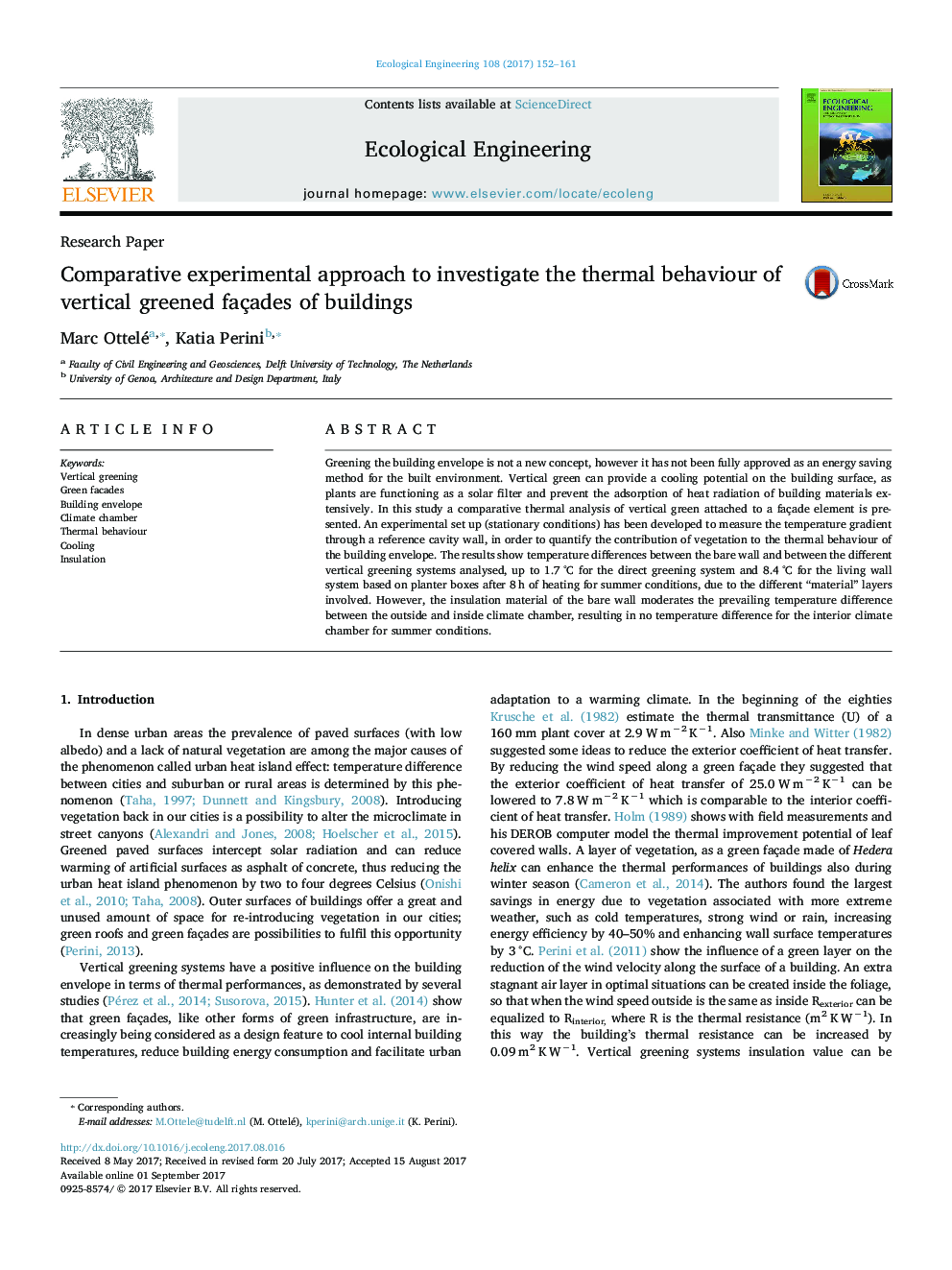| Article ID | Journal | Published Year | Pages | File Type |
|---|---|---|---|---|
| 5743528 | Ecological Engineering | 2017 | 10 Pages |
Greening the building envelope is not a new concept, however it has not been fully approved as an energy saving method for the built environment. Vertical green can provide a cooling potential on the building surface, as plants are functioning as a solar filter and prevent the adsorption of heat radiation of building materials extensively. In this study a comparative thermal analysis of vertical green attached to a façade element is presented. An experimental set up (stationary conditions) has been developed to measure the temperature gradient through a reference cavity wall, in order to quantify the contribution of vegetation to the thermal behaviour of the building envelope. The results show temperature differences between the bare wall and between the different vertical greening systems analysed, up to 1.7 °C for the direct greening system and 8.4 °C for the living wall system based on planter boxes after 8 h of heating for summer conditions, due to the different “material” layers involved. However, the insulation material of the bare wall moderates the prevailing temperature difference between the outside and inside climate chamber, resulting in no temperature difference for the interior climate chamber for summer conditions.
